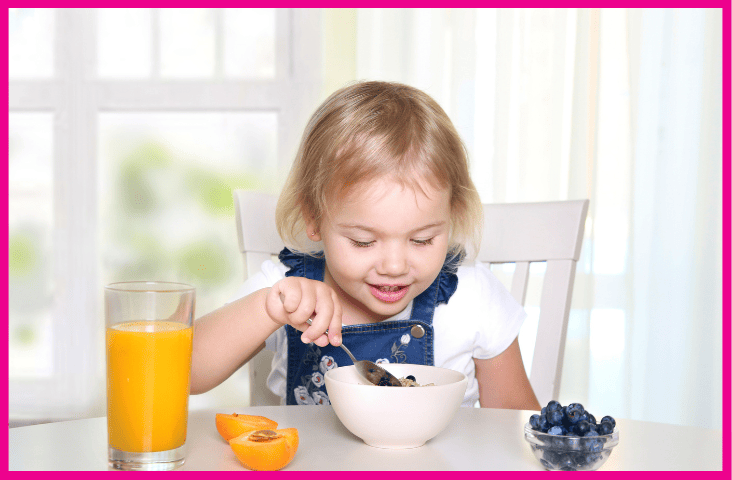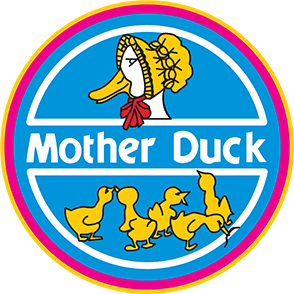
GI or Glycaemic Index: Not just for the grown ups
In my last blog, I looked at carbohydrates, often just called carbs. We explored the difference between sugars and starches, and why starchy foods are usually a better option for children. (Exceptions are fruits and some dairy foods, which contain naturally-occurring sugars.) But it does get more complicated – some starches are better options than others. One reason is how quickly our bodies can use the carbs, a concept known as glycaemic index, commonly called GI. You may have heard of GI in relation to adults hoping to lose weight or control blood sugar levels. However, it’s also useful to think about GI when feeding our children. Foods with a lower GI may help our little ones maintain energy levels better throughout the day, which might assist in keeping our children’s moods even as well.
In this blog, I’ll try to demystify GI. I’ll then follow it up with some healthy carb meal and snack ideas to help power your toddlers and pre-schoolers through their busy days.
Choosing the best carbs
When it comes to carbs, some get absorbed from our stomach or intestine into our bloodstream more slowly than others – these are known as lower GI or lower glycaemic index carbohydrates. Because they are absorbed more gradually, they fuel our bodies for longer and can help to keep blood sugar levels more even. Often, these are foods that are
- Higher in fibre* – thus brown rice will be a lower GI than white rice
- More ‘whole’ – so fruit is a better choice than fruit juice, and wholegrain bread is better than wholemeal which is better than white.
- Higher in protein – this is one reason why milk and yogurts tend to be lower GI foods

Finding low-GI foods
Low-GI foods are not always easy to spot, so here are some lower-GI ideas. See the website listed at the bottom of the article for more information.
Two of the best low-GI options are foods that are oat-based or those that contain beans, legumes, or pulses. These include oat-based breakfast cereals and porridge, grainy breads containing oat-bran, lentil soup, bean salads, and baked beans.
Also, look for:
- Breads – wholegrain, pitta, pumpernickel, or rye
- Pasta (preferably wholemeal) and noodles
- Sweet potato, sweetcorn, peas, and carrots
- Barley, quinoa, and bulgar wheat
- Most rice is higher GI, however basmati and especially Doongara are lower GI types.
- Fruits vary widely – apples, bananas, pears, plums and peaches are just some of the many lower GI fruits.
- Milk, yogurt, and custard – you can choose reduced-fat varieties for children over the age of 2
These days, lots of food labels give you GI information. A food is low-GI if it’s 55 or less, medium-GI if it’s 56-69, and high-GI if it’s over 70. Do note that just being low GI doesn’t automatically mean that a food is healthy. Because fat and protein slow a food’s digestion, this lowers the GI of foods like chocolate but unfortunately doesn’t make them a healthy option.
My tip is to aim to include low-GI foods at least once or twice each day, and preferably at most meals as children get older. Breakfast is a great place to start!
Building a better breakfast
I’m sure most of you will have heard that eating breakfast can benefit our children’s ability to learn at school (and I feel it’s also likely to benefit the learning they do through play when they’re too young for school). Scientists have also looked at the type of carbs that make up the breakfasts.
When a group of 6-7-year-olds in the UK ate lower-GI foods at breakfast, they performed better on memory tests and demonstrated a longer attention span than children who had eaten a higher GI breakfast or nothing at all. A similar result was found with 12-14-year-olds, who were speedier and more accurate in tests when they’d had a low GI breakfast. Read on for some breakfast foods that might be good options for your little ones, as well as ideas for later in the day.

Meal and snack ideas
The last step is translating the healthy carb and GI information into the actual meals and snacks we eat. Here are some ideas to fuel your children to help them play and learn all day:
Breakfast – porridge, oaty muesli with chopped fruit, baked beans on toast
Lunch at home – bean soup, hummus with carrot sticks, and toasted rye bread for dipping
Lunchbox ideas – wholegrain roll with chicken, tomato, and lettuce; pitta bread pinwheels with cheese and cucumber
Evening meal – brown basmati egg fried rice, noodles with tofu stir fry, grilled meat with frozen peas and corn and sweet potato wedges
Snacks – yogurt, wholegrain crackers and cheese, chopped apple or pear, half sandwich made with granary bread.
*A note about fibre: Very young children don’t need a lot of fibre – too much can fill them up so much that they may not be able to fit in all the food they need. However, as they grow older the amount of fibre-rich foods can increase, so that by the time our little ones are five years old most starchy foods should be wholegrain, as all the family should be eating.

For more information:
The University of Sydney is a world leader in GI research. If you’re interested in learning more or want to know the GI of a specific food, you can look at their website at http://www.glycemicindex.com/.
© Fiona Hinton 2023
MEDICAL DISCLAIMER: Please note that this blog is for general information only, and should not be taken as a substitute for qualified medical advice. Please discuss medical issues with your child’s doctor before taking any action.
About Fiona: Fiona Hinton is a dietitian, but describes herself as a nutrition translator, taking the science of nutrition and translating it into foods we love to eat, to nourish both body and soul. She has over 20 years of experience as a dietitian, working in a wide range of areas from hospital wards to running her own private practice. Fiona has a special interest in children’s nutrition. As a mum of three school-age boys, she has first-hand experience of the issues associated with feeding young children, such as weaning and fussiness. Fiona specialises in real-life strategies and practical suggestions to convert nutrition advice into food kids will eat. Fiona has collaborated on several books, including one with best-selling children’s food writer Annabel Karmel, as well as training childcare staff in children’s nutrition.


